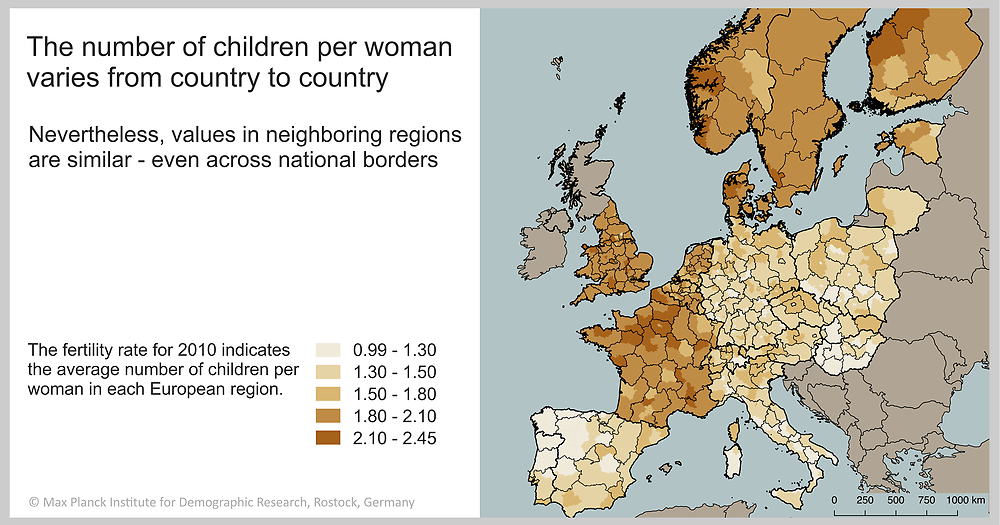February 05, 2020 | Press Release
Fertility rates across Europe: Regions grow together

© photocase.com
The average number of children per woman in Europe varies from country to country. Nevertheless, many neighboring regions have similar birth rates. For the first time, this was examined for many countries in Europe by Nicholas Campisi and colleagues using small-scale data from Eurostat.
How many children a woman in Europe has on average varies from country to country and probably depends to a large extent on the family policy. At regional level, however, birth rates can be similar across national borders. Similarities between regions, in terms of children per woman, exist despite large differences between some countries.
For example, the birth rate in Brandenburg and in neighboring Lubuskie in Poland is similarly high. That is striking because, compared to the rest of Germany, women in Brandenburg have more children. Women in the Polish Lubuskie bear fewer children than in the rest of Poland. So in this region in the heart of Europe the birth rate is regionally similar, and differs from the national averages.

© MPIDR
Nevertheless, differences also exist at regional level, for example in the border region between France and Germany. On average, women in the German border regions have significantly fewer children than in the neighboring French regions. They therefore remain consistent with their respective national trends.
The researchers did not find out why these similarities arise and why differences exist but point to both economic and social, as well as the spatial, forces as contributors to patterns across Europe.
For their models at regional level, Nicholas Campisi, Mikko Myrskylä and colleagues used Eurostat's 2010 birth data for 21 European countries, which include 1134 regions. They published their results in the journal Population, Space and Place.
Original publication
Campisi, N., Kulu, H., Mikolai, J., Klüsener, S., Myrskylä, M.: Spatial variation in fertility across Europe: Patterns and determinants. Population, Space and Place. (2020) DOI: https://doi.org/10.1002/psp.2308